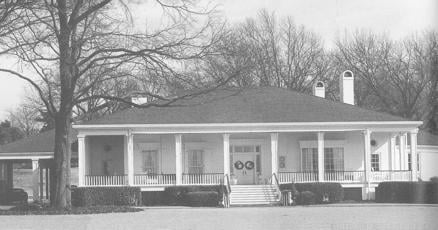John Duncan Forsyth brought Gilded Age extravagance to the young state of Oklahoma in the 1920s.
Called Duncan as a boy and Jack as an adult, he was born in 1887 near Edinburgh, Scotland. As taciturn as a Gary Cooper film character, his life was cinematic. He was studying and traveling in Europe where he met the celebrated classical architect John Russell Pope (Metropolitan Museum of Art, Vanderbilt family mansions).
Forsyth came to New York in 1908 to work for Pope, who sent him to Canada to labor on Ottawa’s Fairmont Château Laurier Hotel with its castle splendor. There during World War I he joined the Royal Flying Corps Canada, a dashing adventure that ended when he fell from a plane parked on the ground. He designed schools and banks in Shanghai, then returned to the U.S. in 1921 and became a naturalized citizen.
By 1924 he was in Tulsa in partnership with John Vincent McDonnell, a brilliant young Irish architect roughly the same age. That world fell apart two years later when McDonnell died of lymphatic leukemia at age 37.

John Duncan Forsyth
Fate and good fortune rescued Forsyth. Wealthy oilman E. W. Marland of Ponca City wanted a “Mansion on the Prairie” similar to the Davanzati Palace in Florence. Pope declined the commission but recommended protégé Forsyth.
Marland was vacationing in Colorado, so Forsyth packed his wife, daughter and a tent into the family’s Chevrolet and went in search of him, camping along the way. He got the job, studied the Davanzati Palace, hired some of the same artisans Pope used for the Vanderbilt mansions and spent three years building with a carte blanche budget. The Marland Mansion, Italian Renaissance
Revival, was completed in 1928 at a cost of $5.5 million ($98 million in today’s dollars). It was Forsyth’s shining glory; he was 38 years old.
In Tulsa he built mansions for people luxuriating in the oil boom and designed churches (All Souls Unitarian), schools (Webster High School), shopping centers, museums (Will Rogers Memorial in Claremore), stables and dams in the area. He partnered with Donald McCormick to build Southern Hills Country Club and the picturesque home of R. Otis McClintock (2211 E. 41st St.)

McClintock house
Forsyth built his own home in the sleek Streamline Moderne style and said his favorite residential work was the Elizabethan style home of oilman Homer F. Wilcox (1351 E. 27 Place). He was versatile (revivals of Tudor, Dutch Colonial, Colonial, Georgian, Mediterranean and Art Deco) and his prevailing philosophy was “elegance of simplicity,” understated elegance.
His personal life was turbulent, married six times (twice to the same woman), divorced twice and widowed twice. He died in 1963 at age 76.
The Tulsa Foundation for Architecture holds eight archival drawers of his designs, some precisely hand drawn in pencil on slowly browning tissue paper, as fragile as a drying peony petal. “He was a visionary architect,” says Amber Litwack, executive director of TFA, “and left an indelible mark on the landscape of Oklahoma.”
One of his favorite creations was the B. B. Blair mansion on Riverside Drive overlooking the Arkansas River, which Forsyth replicated from Confederate
Jefferson Davis’ home in Mississippi. The Blair residence was razed in 2014 to make way for construction of Gathering Place.
